Toothbrushing cannot clean the adjacent surfaces of teeth. If we want to remove the plaque accumulated on the adjacent tooth surfaces, we must use dental floss or interdental brush daily. Parents or caregivers can assist children or people in need to clean adjacent tooth surfaces by using a floss holder.
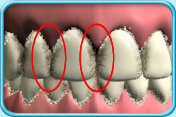 Plaque accumulated on the adjacent tooth surfaces
Plaque accumulated on the adjacent tooth surfaces
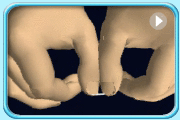 |
|
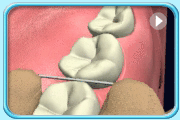 |
|
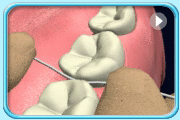 |
|
|
Please use a new part of floss every time as the used floss was contaminated with bacteria already.
Video display: Flossing Method
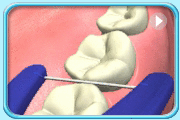 |
|
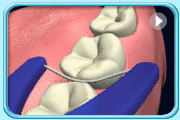 |
|
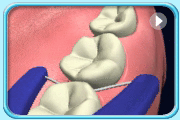 |
|
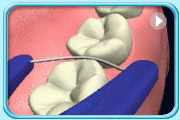 |
|
|
If there is a wide gap between the neighboring teeth, an interdental brush may be used instead of dental floss.
The further the distance between the two fingers holding the floss, the more difficult it will be to control it. Therefore, you should keep the distance between the fingers to be about 2 cm and you can tighten up the floss when flossing. This will help improve the situation. You can start flossing on the front teeth, after mastering the skill, you can then try flossing on the posterior teeth.
To clean the adjacent tooth surfaces of posterior teeth, you will need to use the forefingers to control the floss inside the mouth.
Correct use of dental floss will not cause any damage to the gingivae. You have to slowly “pull” the dental floss into the interdental space, pull the floss taut against one side of the adjacent tooth surfaces, start from the deepest part of the gingival sulcus, and slide the floss up and down to clean the surface. This will not injure the gingival tissue.
This can be caused by the accumulation of calculus. The situation will be improved once the calculus has been removed by scaling. Remember to brush and floss your teeth daily after the calculus has been removed.
If the spaces between teeth are large like those teeth with gum recession due to gum disease, you may use interdental brush to clean the interdental space. Insert the interdental brush into the gap between the roots of the teeth, brush forward and backward to clean the adjacent tooth surfaces.
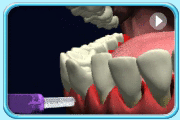
Video display: Use of an interdental brush